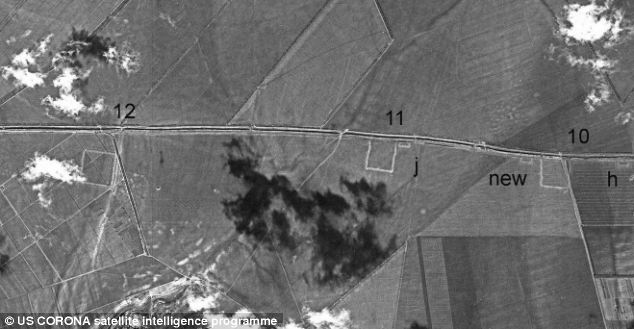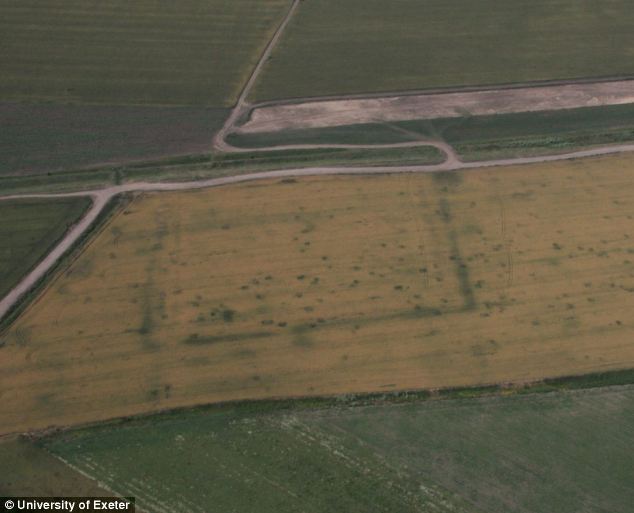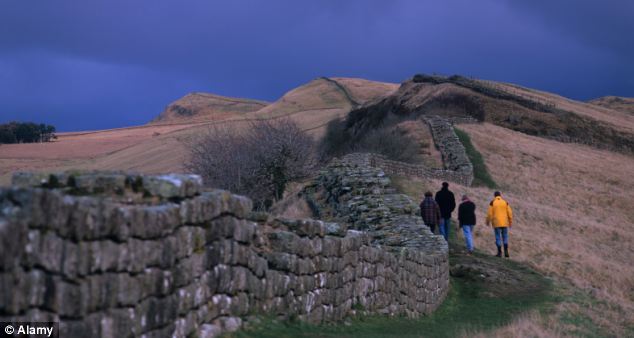- Trajan's Rampart ran 60 kilometres from the Danube to the Black Sea and
would have measured 3.8 metres tall and over eight metres thick
- British archaeologists consider it the most easterly example of a man-made frontier barrier system in the Roman Empire
- University of Exeter experts believe declassified photographs taken during covert surveillance may herald a new era for archaeological discovery
Named Trajan's Rampart, the long wall ran 60 kilometres from the Danube to the Black Sea and isconsidered the most easterly example of a man-made frontier barrier system in the Roman Empire.Built in the mid-second century AD the wall once stood eight-and-a-half metres wide and over 3-and-a-half metres high, including at least 32 forts along its course.

It is thought to have served a similar purpose to other Roman frontier walls, such as Hadrian's Wall, which were built to defend the Empire from threats to the borders.
Trajan's Rampart actually consists of three separate walls of different dates and while constructions were previously known about, they were wrongly thought to date to the Byzantine or Early medieval period.
Although it is estimated that over 50 per cent of all archaeological sites in the UK have been discovered from the air, other countries are less well studied.
Archaeologists believe that examining declassified photographs taken during covert surveillance may herald a new era for archaeological discovery and could help to uncover and identify thousands of new archaeological sites around the world.
Dr Ioana Oltean, senior lecturer in the archaeology department from the University of Exeter, said: 'Photographs from military surveillance are revealing more than those who took them could have imagined because now, half a century or more later, they are proving to be of enormous benefit in showing us our lost archaeological heritage.
'Thanks to such images, the landscape of this frontier zone is now known to have been as busy in the past as it is today.'

Alongside this, a considerable historical aerial resource is also now available from the recently declassified covert US CORONA satellite intelligence programme of the 1960s, 70s and 80s, which includes around 900,000 photographs from around the world.

Bill Hanson, professor of Roman archaeology from the University of Glasgow, said: 'We believe we have enough evidence here to demonstrate the existence of a chronologically complex Roman frontier system and the most easterly example of a man-made barrier in the Roman Empire, serving to block an important and strategically valuable routeway.'
'It is an incredibly important discovery for the study of Roman history.'



Reader Comments
to our Newsletter